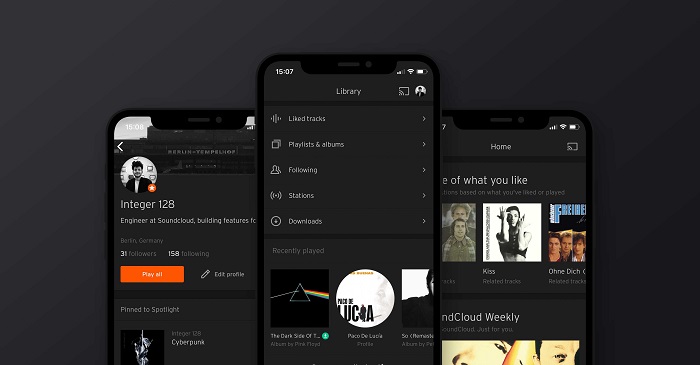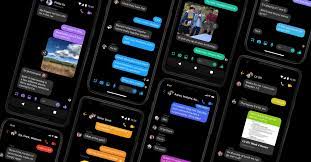How Can Dark Mode Save Battery Power?
With The Addition Of Dark Mode To Most Major Operating Systems Such As Windows, Macintosh, Android, And IOS, And Popular Software, Many Users Are Looking To Enable This Feature Through The App Settings Menu, Especially On Their Mobile Phones And Tablets.
Dark Mode, But are the explanations given about the effect of this feature in reducing the amount of pressure on the eyes and maintaining more battery charge correct? The answer is yes and no!
Although it is possible to take advantage of reduced eye strain and sleep better at night on all devices and devices, it is only possible to prevent the battery from running out of power early on smartphones, tablets, laptops, monitors, and devices in general. OLED panel has been used in its design and development.

Different designs of OLED panels, the main reason for this great advantage!
What is clear and needs no further explanation is that the monitor consumes more power when displaying brighter and brighter images; For this reason, reducing the brightness of the screen on mobile phones can sometimes lead to a significant reduction in battery consumption, but this advantage is only part of the equation.
Most modern smartphones and tablets use two types of liquid crystal display (Liquid Crystal Display or LCD) and Organic Light-Emitting Diode (OLED).
LCD panels have long been the dominant technology on most displays and monitors, dating back to the late 1990s and early 2000s. These panels are prevalent among developers and consumers after CRT monitors and TVs due to their sophistication and technology superiority.
Today’s LCD monitors use light-emitting diodes as backlighting to produce images that emit light through three grids of red, blue, and green pixels to produce various colors and color images.
This combination of technology is known as LED-LCD, which is often provided to users and consumers for LED display for ease of pronunciation and recognition.
An Organic LED Display (OLED) uses a special process to combine pixel grid and backlight into an integrated structural element; In this case, each pixel generates light as a separate source.
The advantages of this technology are much greater than previous displays, some of which include superior contrast rates and better differentiation of objects and elements in the images, more vivid color saturation, and higher efficiency, but a special advantage that in This article goes back to the first feature.
Because in OLED panels, each pixel generates its own light separately, when a completely dark image is displayed on the screen, the pixels are virtually silent. They do not consume any electricity (dark section pixels).
In fact, they are off, which is why OLED panels are far superior to all other current technologies such as LCD, LED, QLED, etc., in displaying more depth in the black parts of images or True Dark.
HOWEVER, in LED panels, all the pixels are on, regardless of the image displayed, and the pixels in the dark areas are actually producing black light.
Certainly, this is very effective in saving energy and preventing the battery from running out too soon.

Mobile phone companies are aware of this, and using OLED panels in their expensive and advanced products brings more inherent benefits to their products.
Using the aforementioned panels and “Always on” technology, Motorola pioneered this superiority in mobile phones for the first time in the design and development of its Moto X smartphone in 2012.
The screen of the above mobile phone is always on thanks to the mentioned technology. Only a limited number of pixels display the clock, notification messages, and the remaining charge amount, affecting energy consumption of less than 1% per hour.
However, the implementation of Always on technology in smartphones based on LCDs leads to early battery drain because the screen is always on. The pixels of the dark parts of the image are consuming power.
What is the effect of Dark Mode on battery consumption?
More than you can think about! Google has been searching for the right answer to this question while developing the dark mode for embedding in its Android operating system and application and has shared its interesting results in a conference with the developers.
According to Google, the use of dark mode on the YouTube platform compared to the traditional white background has reduced battery consumption by 15 to 60 percent, which is an enormous figure in its kind.
Undoubtedly, this feature is a huge improvement, so important that Google has now included the dark mode as a public option in the settings menu of the Android operating system.
Put, if the app you normally use during the day switches to dark mode, a minimum to half an hour of battery life will be saved.

Finally, we return to the beginning of the article and note that the advantage of saving the battery consumption of portable devices as a result of activating the Dark Mode feature is only tangible when the device in question is equipped with an OLED display, but this does not mean that You are not allowed to use it (assuming the mobile phone is not equipped with the above display).
As mentioned earlier, the darkening of the background and user interface of applications affects the amount of blue light emitted from the screen, which directly affects the amount of pressure on the eyes, especially during dark weather and sleep quality.
Lays. Since most people tend to check their social media accounts before bed, activating this feature may effectively reduce eye fatigue or fall asleep faster.













